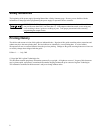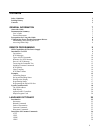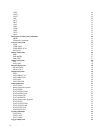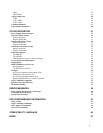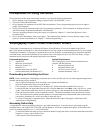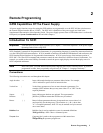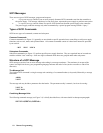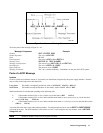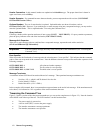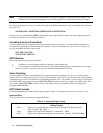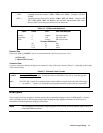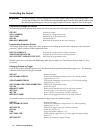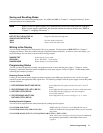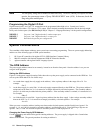
Remote Programming 11
Figure 2-1. Command Message Structure
The basic parts of the message in Figure 2-1 are:
Message Component Example
Headers VOLT LEV PROT CURR
Header Separator The colon in VOLT:LEV
Data 4.5 4.8
Data Separator The space in VOLT 4. 5 and PROT 4. 8
Message Units VOLT:LEV 4.5 PROT 4.8 CURR?
Message Unit Separator
The semicolons in VOLT: LEV 4. 5; and PROT 4. 8;
Root Specifier The colon in PROT 4. 8; : CURR?
Query Indicator The question mark in CURR?
Message Terminator The <NL> (newline) indicator. Terminators are not part of the SCPI syntax.
Parts of a SCPI Message
Headers
Headers (which are sometimes known as "keywords") are instructions recognized by the power supply interface. Headers
may be either in the long form or the short form.
Long Form The header is completely spelled out, such as VOLTAGE STATUS DELAY.
Short Form The header has only the first three or four letters, such as VOLT STAT DEL.
Short form headers are constructed according to the following rules:
• If the header consists of four or fewer letters, use all the letters. (DFI DATA)
• If the header consists of five or more letters and the fourth letter is not a vowel (a,e,i,o,u), use the first four
letters. (VOLTage STATus)
• If the header consists of five or more letters and the fourth letter is a vowel (a,e,i,o,u), use the first three letters.
(DELay CLEar)
You must follow the above rules when entering headers. Creating an arbitrary form, such as QUEST for QUESTIONABLE,
will result in an error. The SCPI interface is not sensitive to case. It will recognize any case mixture, such as VOLTAGE,
Voltage, Volt, volt.
Note Shortform headers result in faster program execution.



